This article is an excerpt from the book “Office 365 for IT Pros“.
Even though Office 365 and Exchange Online takes much of the support and maintenance responsibility out of your hands there is still a need for organizations to have visibility of the health of the service and technical issues that may be impacting them at any given time.
Logging in to the Office 365 admin center will take you to a dashboard view. One of the items on the dashboard is the Service health, showing the current health status for each of the services that relate to your Office 365 tenant.
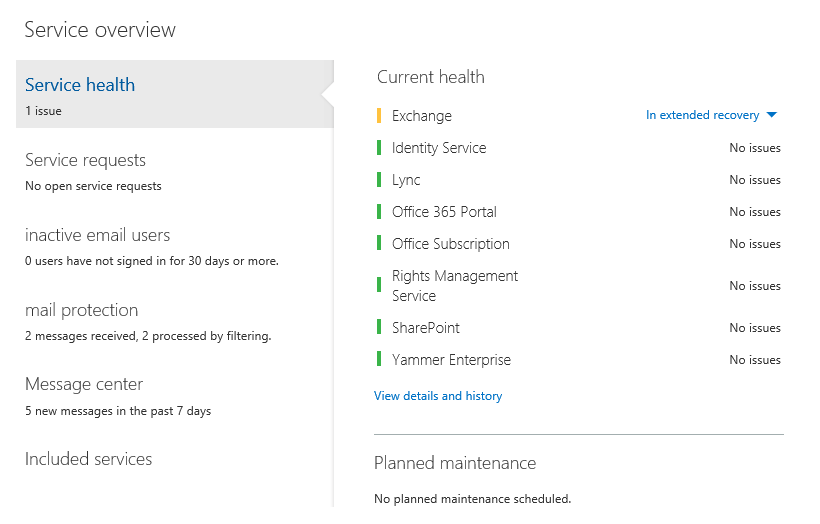
Clicking on the View details and history link will take you to a more detailed view of the service status for the last 7 days. You can also see a 30 day history.
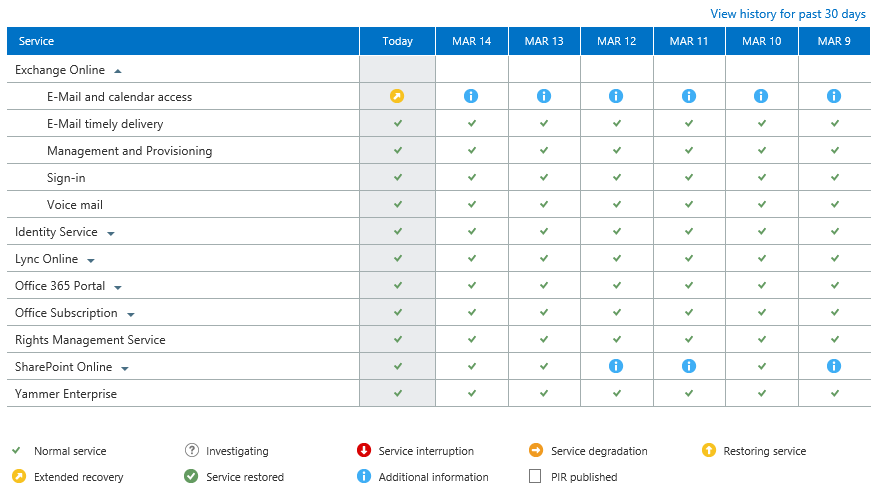
Service status is represented by a series of icons that are explained in the legend at the bottom of the page. Clicking on the status icon for a service on any given date will display more information about that status. For example, in the image above you can see that Email and calendar access is in extended recovery. Clicking on the Extended recovery icon will display a detailed incident timeline starting from when the issue was first identified, and will often include periodic updates over the course of the incident lifecycle.
Microsoft publishes a detailed incident report for even a simple issue that impacts relatively few customers. After an incident has been fully resolved you will also often see that Microsoft has published a post-incident review (PIR) to explain the matter in more detail.
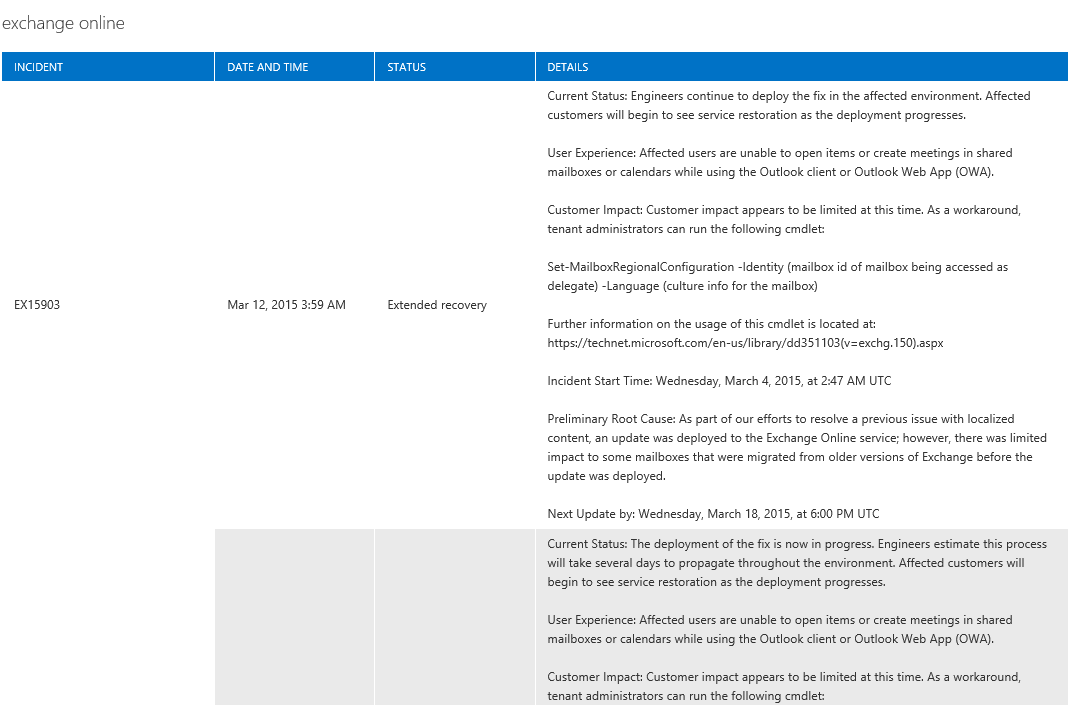
Because of the scale of Office 365 there will naturally be incidents occurring somewhere in the service at any given point in time. The service health dashboard that you see in your Office 365 admin center is intended to be a view of issues impacting your tenant, rather than every single issue impacting any tenant in the entire Office 365 service. It is also possible that you will be experiencing an issue with your service that is not reported in the service health dashboard. Not every issue can be detected by the automated monitoring systems within Office 365, and some issues need to be reported by multiple customers and be escalated beyond level 1 support teams before they can be confirmed.
Furthermore, you may be experiencing an issue with your tenant that is due to a misconfiguration on your part, not a service fault. For example, if you misconfigure your DNS records and your Exchange Online recipients stop receiving email, that is not something that the service health dashboard is going to alert you to because it is not a fault with Office 365 itself.
Regardless of these limitations the service health dashboard is a useful resource for administrators. To stay up to date with the information in the service health dashboard you can subscribe to an RSS feed.
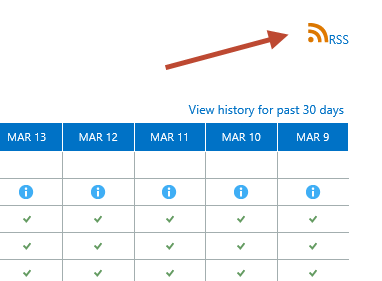
The RSS feed does not require authentication so you can easily subscribe to it in the RSS reader of your choice. You could even use an RSS to email service, such as IFTTT, to ensure that any service health updates are emailed to you.
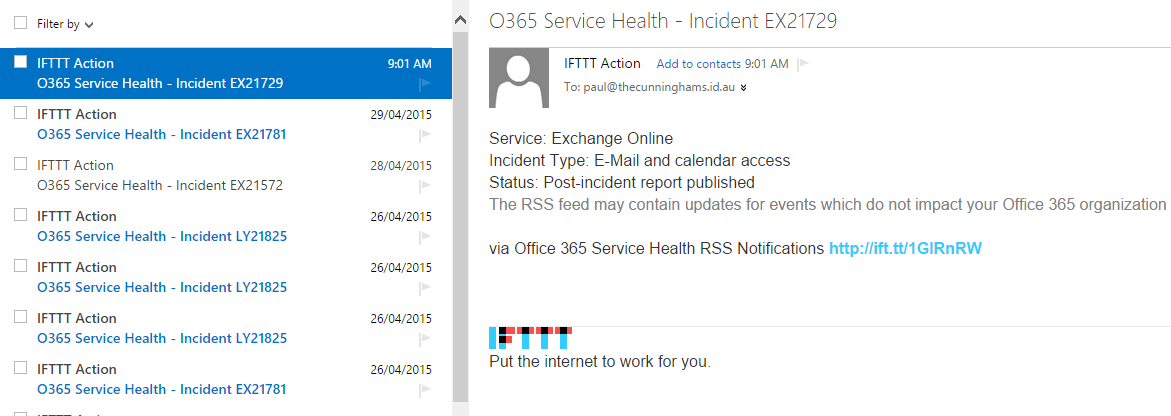
Learn more about managing Office 365 in “Office 365 for IT Pros“.
[adrotate banner=”50″]


